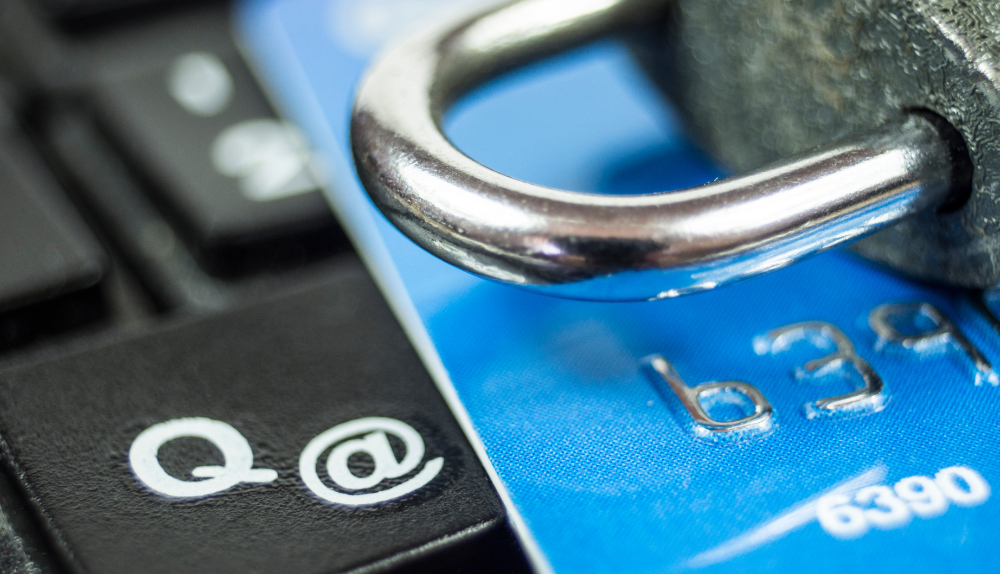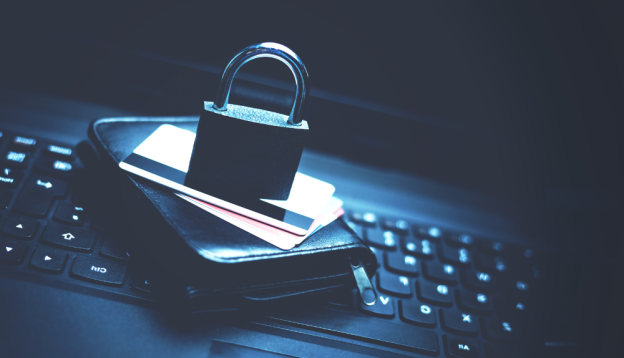If you have been running a small business, you most likely have already installed retail POS or a payment gateway to accept card payments. An integral part of your customer experience with your eCommerce store is payment flexibility. Allowing them to pay through a convenient method is key to achieving their satisfaction. People don’t carry cash these days, making a virtual terminal or a card machine a necessity for all businesses. In this post, we have outlined a few common credit card security risks every business owner should be familiar with.
As convenient as card payments are for customers, they carry a significant risk for store owners. The cards can get stolen and misused by a malicious actor. Or, there’s a risk someone might use a fake card. Knowing these risks and taking preventive measures will help protect your business from card security issues. Whether you are accepting in-person payments or card-not-present transactions, watching out for the risk factors is crucial to prevent risky transactions.
5 Common Types of Credit Card Security Risks

With so many card transactions processed daily, there’s an increased risk of fraudulent transactions. The risk is significantly higher for businesses reporting a large volume of transactions or selling luxury goods.
Identifying such transactions is key to mitigating the risks associated with card-related fraud. Training your employees on using the latest payment software apps or card machines and verifying the authenticity of the transaction is important to ensure safe card payments.
Untrained Staff
Many credit card security issues arise because of untrained staff. The first thing a business owner should do when hiring a new employee is training them about different payment methods. They should understand the difference between an authorized and unauthorized card transaction, the security risks associated with credit card payments, and the hardware & software that process card transactions.
Many security breaches occur because of the employee’s negligence or a small mistake from your employees’ end that results in a data leak. For instance, if your employee did not update the software as recommended or stored the card information securely, someone could get unauthorized access to customers’ cards, causing a security breach. Your employees must be trained and equipped with the necessary tools to execute card transactions securely.
Not Storing Card Details Properly
Nowadays, storing credit card details for future transactions has become a common practice. It streamlines payments for both customers and merchants. However, not storing the data properly can result in a security breach. Not only does it expose this information to hackers, but there is a risk of an insider attack. The worst part is that data breaches from improperly stored card details can lead to legal actions against your business.
The best solution to this is storing the customers’ card details following PCI DSS compliance. Having a software solution where the card of repeat customers is stored securely is essential to prevent data leaks. Remember, a security breach that occurs due you the business’ inability to store customers’ confidential data can lead to heavy penalties. You might also lose the right to accept card payments altogether.
Credit Card Fraud
Because of the increased security of EMV chip cards, hackers are shifting their focus to card-not-present transactions (CNP). Without the actual card being presented at the store, it’s difficult for the store owner to verify the legitimacy of the transaction.
There’s also a high risk of friendly fraud. A customer can buy goods/services from your store and might issue a chargeback against your business. It’s either a mistake from the customers’ end or they do it intentionally just to target a full refund.
Outdated Software
Companies using outdated payment software are more likely to suffer a security breach than those who update their software applications regularly. The new updates are launched frequently to remove bugs from the previous version and provide businesses with a safe and robust security solution. An attacker targets businesses using outdated versions of tech and security tools, as it’s easy to get access to vulnerable systems.
POS Skimming
Businesses accepting card payments through point-of-sale software are at risk of POS skimming. It’s a malicious technique where a tech-savvy hacker can replace your POS with a clone tool that looks like your POS machine but is malicious software that sends customers’ card details to the hacker.
A fraudster can install an application on your system or replace it altogether with a duplicate version, putting your business at an increased risk of security breaches. A criminal can pose as a bank representative or a security agent and replace your payment system with a fake processing system that transmits all the data you put in the system to them.
These are a few common credit card risks that are reported in large numbers across the US. credit card security risks and breaches can occur in different forms. Knowing the risk factors and taking steps to mitigate the risk is crucial to ensuring your business and customers’ safety. Below we’ve discussed some preventive steps you can take to avoid credit card risks. Let’s take a look.
Tips for Preventing Credit Card Security Risks

Implement Address Verification System
An address verification system is an additional layer of protection in card payments. You may have encountered a website asking you to submit your street number and zip code during the checkout. Well, that is the address verification part that matches your entered address with the address in your bank’s records. A fraudster can steal your card number and CVV, but it’s less likely that they steal your address too. Implementing AVS will ensure that each card transaction is secure and processed by the actual cardholder.
Upgrade to an Anti-Malware Software
Updating your software regularly or every time a new update rolls out will protect your business from security breaches due to updated software. Many anti-malware software applications work in the backend to identify suspicious transactions. Remember, phishing has become a common practice among attackers. They can easily trick one of your employees into clicking on the malicious link and exposing the business’ confidential data. A few steps to prevent such attacks are:
- Update your passwords to complex 8-digit passwords and change them frequently to prevent brute-force attacks.
- Maintain access permission for your employees. They should not get more privileges than they need for their jobs.
- Use separate devices for your personal and business accounts.
- Use anti-phishing, anti-malware, and anti-virus programs to reduce the risk of cyber threats. Adding firewall protection can also help detect and filter out unusual traffic on your network.
Report Fraud Instantly
You may try all possible preventive measures to mitigate the risk of fraud, but nothing really guarantees 100% fraud prevention. If you believe the fraud has occurred, it’s important to notify the authorities immediately before the fraudster causes any serious damage to your business. You need to contact the acquiring bank, payment processor, and other parties involved in your card transactions. If required, seek legal help immediately.
Comply with PCI Standards
The Payment Card Industry has established many security standards for business owners accepting credit/debit card payments. These regulations instruct businesses on how to store and transmit card data safely. Following the compliance will not just mitigate the risk of credit card fraud, but it lowers your risk of facing penalties, chargeback, and other issues.
Watch Out for Unusual Behavior
It’s not always possible to detect fraudulent activities with your card threat prevention tools. Sometimes, customer behavior can suggest something unusual. For example, buying too many luxury items from your retail store, rushing during the checkout, and not giving their billing address are a few signs of cyber threats.
These activities do not necessarily mean a customer is attempting fraud, but there’s a possibility. It’s best to collect all details on the card and your customer’s personal details like their address and phone number, before accepting the transaction.
Protection from Card Skimming
Do not give fraudsters a window to replace your card machine with a clone. Make sure the card is always in the customer’s sight and the transaction is processed securely. Leaving your POS system unattended during business hours can lead to security breaches. That’s because hackers can easily tamper with the card terminals if there’s no one watching.
Always monitor your card machines for signs of tampering. If you notice a loose screw, any new sticker on the payment processing device, and other such changes to your hardware or software, notify the bank and legal authorities immediately.
Bottom Line
Every payment method carries some level of risk. While there are preventive measures that can mitigate these risks to a great extent, they don’t completely prevent the possibility of credit card fraud.
The payment landscape will be completely different in 10 years from now and so will the cyber threats. It’s important to keep your employees up-to-date with the changes in the payment landscape. Knowing the latest updates in payment software and card transactions can help reduce the risk of cyber threats.
